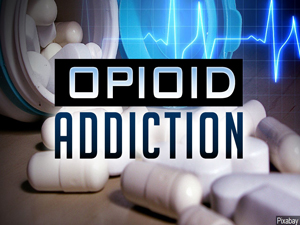Syphilis cases rise alongside increased opioid addiction
By Nisa Islam Muhammad -Staff Writer- | Last updated: Feb 26, 2019 - 12:12:27 PMWhat's your opinion on this article?
WASHINGTON—Syphilis, once at record low rates, is now setting alarmingly high rates and the major risk factor according to a new report released by the Centers for Disease Control and Prevention is drug use. People at the intersection of risky sexual behaviors and opioid addictions are driving the rise in syphilis, say researchers.

|
According to the report, between 2013 and 2017, the rate of syphilis infection among heterosexual men and women who use methamphetamines more than doubled.
“While we don’t know the precise role that substance use may play in syphilis increases, we do know that substance use, particularly methamphetamine and injection drug use, has been associated with sexual behaviors that increase risk of acquiring syphilis and other STDs,” explained lead researcher Dr. Sarah Kidd, a medical officer in the CDC’s division of STD prevention.
“We also know that substance use can hamper prevention efforts,” Dr. Kidd added. People who use drugs may be less inclined to seek health services, and they may also be reluctant or unable to identify or locate sex partners, which can cause delays in diagnosis and treatment, she told the media.
Syphilis rates have skyrocketed by 73 percent overall and 156 percent for women from 2013 to 2017, said the CDC. The highest rates were reported in Louisiana, Nevada, and California.
A simple antibiotic can treat syphilis but left untreated it can lead to organ damage and even death. A mother can pass congenital syphilis to her unborn baby, which can lead to premature birth and newborn deaths.
The report looks at syphilis cases from 2013 to 2017 and analyzed which patients had also reported using drugs—they found methamphetamine was the common denominator. More than one-third of women and one-quarter of heterosexual men with syphilis reported using the drug within the previous year.
“These findings indicate that a substantial percentage of heterosexual syphilis transmission is occurring among persons who use methamphetamine, inject drugs or have sex with persons who inject drugs, or who use heroin, and that heterosexual syphilis and drug use are intersecting epidemics,” researchers wrote. “A linkage between heterosexual syphilis and drug use has been observed previously. In the late 1980s and early 1990s, increases in heterosexual syphilis were associated with crack cocaine use.”
The increase in substance use among people diagnosed with syphilis mirrors dramatic nationwide increases in syphilis seen among women and heterosexual men in recent years, Dr. Kidd explained.
Nearly 2.3 million cases of chlamydia, gonorrhea, and syphilis were diagnosed in the United States in 2017, according to data released by the CDC at the National STD Prevention Conference in Washington, D.C. last summer. This surpassed the previous record set in 2016 by more than 200,000 cases and marked the fourth consecutive year of sharp increases in these sexually transmitted diseases. Prior studies suggest a range of factors may contribute to STD increases, including poverty, stigma, and discrimination and drug use.
The syphilis report was published Feb. 15, in the CDC’s Morbidity and Mortality Weekly Report.
INSIDE STORIES AND REVIEWS
-
-
About Harriett ... and the Negro Hollywood Road Show
By Rabiah Muhammad, Guest Columnist » Full Story -
Skepticism greets Jay-Z, NFL talk of inspiring change
By Bryan 18X Crawford and Richard B. Muhammad The Final Call Newspaper @TheFinalCall » Full Story -
The painful problem of Black girls and suicide
By Charlene Muhammad -National Correspondent- » Full Story -
Exploitation of Innocence - Report: Perceptions, policies hurting Black girls
By Charlene Muhammad -National Correspondent- » Full Story -
Big Ballin: Big ideas fuel a father’s Big Baller Brand and brash business sense
By Bryan Crawford -Contributing Writer- » Full Story






 Click Here Stay Connected!
Click Here Stay Connected!








